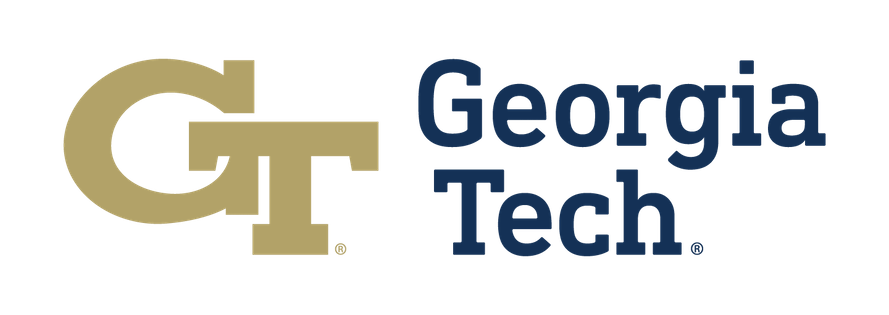Center for Machine Learning for Seismic Industry Partners Program
A joint initiative at GATech between the Center for Energy & Geo Processing (CeGP) lead by professor Ghassan AlRegib (ECE) and the Seismic Laboratory for Imaging and Modeling (SLIM1) lead by professor Felix J. Herrmann (EAS, CSE, ECE), innovators in the energy sector, and major Cloud providers.
Formally approved description of the Center
Georgia Tech’s Center for Machine Learning for Seismic (ML4Seismic) is designed to foster research partnerships aimed to drive innovations in artificial-intelligence assisted seismic imaging, interpretation, analysis, and monitoring in the cloud.
Through training and collaboration, the ML4Seismic Industry Partners Program promotes novel approaches that balance new insights from machine learning with established approaches grounded in physics and geology. Areas of interest include, but are not limited to, low-environmental impact time-lapse acquisition, data-constrained image segmentation, classification, physics-constrained machine learning, and uncertainty quantification. These research areas are well aligned with Georgia Tech’s strengths in computational/data sciences and engineering.
Charter Partner at $ 180,000 or more (Annual)
Disseminate job announcements and facilitate recruitment of students for internship opportunities
A total of five complimentary registrations for the Fall and Spring ML4Seismic meetings when held
Access to information to reproduce our results made available to the public via creative commons and open source licenses
Invitation of company representatives to the Industry-Student Mixer providing opportunities to engage with both students and faculty for potential research projects, student recruitment, etc.
Two complimentary registrations per year for ML4Seismic professional education course/workshop (if it is held), such as for example, professional education course/workshops on best practices for machine learning in image segmentation and classification; in seismic acquisition design, in seismic imaging in the cloud, or in the fundamentals of machine learning
Facilitate engagement with ML4Seismic faculty and students
Facilitate company information session once a year to discuss potential new research directions and opportunities
Invitation of up to 5 company representatives to attend ML4Seismic hackatons when held and during which problems on open source (labeled) seismic data are solved
Access to beta testing of ML4Seismic’s open source software
Recognition as a Diamond sponsor of the ML4Seismic Seminar Series
Executive Partner at $ 90.000 – $ 179,000 (Annual)
Disseminate job announcements and facilitate recruitment of students for internship opportunities
A total of three complimentary registrations for the Fall and Spring ML4Seismic meetings when held
Access to information to reproduce our results made available to the public via creative commons and open source licenses
Invitation of company representatives to the Industry-Student Mixer providing opportunities to engage with both students and faculty for potential research projects, student recruitment, etc.
One complimentary registrations per year for ML4Seismic professional education course/workshop (if it is held), such as for example, professional education course/workshops on best practices for machine learning in image segmentation and classification; in seismic acquisition design, in seismic imaging in the cloud, or in the fundamentals of machine learning
Facilitate engagement with ML4Seismic faculty and students
Recognition as a Platinum sponsor of the ML4Seismic Seminar Series
Additional information on the ML4Seismic partnership program
ML4Seismic is a three-way public-private partnership between innovators in the energy sector, two leading academic groups in computational seismology and quantitative interpretation, and major Cloud providers. By leveraging recent developments in Machine Learning and access to the Cloud, ML4Seismic will drive innovations and train new talent. By being part of the Georgia Institute of Technology, one of the leading institutions in Machine Learning (ML@GT), ML4Seismic has access to talents across various units on campus including Computational Science and Engineering (CSE) and Electrical and Computer Engineering (ECE). The principal investigators of the ML4Seismic philanthropic industry partners progam are Ghassan AlRegib (ECE) and Felix J. Herrmann (EAS, CSE, ECE) , Georgia Research Alliance Scholar in Energy. Both directors have solid track records in running the highly successful and productive industry-supported research operations CeGP & SLIM both responsible for innovations in quantitative interpretation and computational seismology, respectively.
This collaboration between the SLIM and CeGP and leading Cloud providers is aimed at the development of new AI-assisted workflows that build on recent breakthroughs in high-performance computing with automatic code generation for wave-equation based inversion (Devito); in task-adapted learned imaging; and in quantitative interpretation. We are not aiming at ‘full’ end-to-end imaging, which only trains on the task, but instead our focus will be on simultaneous task-guided imaging, where the resulting image is driven, to some extent, by the task including but not limited to interpretation. Through an open source policy and potential direct involvement of Cloud providers, ML4Seismic will benefit from technology exchange, joint R&D, and from access to Cloud computing for at-scale technology development and validation on field data. Open source and access to Cloud computing are necessary to drive innovations and to shorten innovation cycles. Our academic track records and access to Georgia Tech’s talent put us in an outstanding position to develop AI-assisted solutions for the seismic industry. Such solutions will be both effective and timely to drive the next phase in the field.
Since ML4Seismic is a philanthropic partnership program
research is supported through research directed gifts
participants receive no direct benefit and requires nothing in exchange beyond a general assurance that the intent of the gift be honored in accordance with these Operating Guidelines2 and other related ML4Seismic agreements
there are no formal contracts and agreements
all research findings are shared as open source under the slimgroup repository on GitHub under the MIT license. All other research findings will be published in the open literature and on the SLIM website
Highlights Research Agenda at SLIM
Wave-equation based imaging and inversion. We plan to further improve the versatility and performance of Devito—a code generation framework for highly optimized finite difference kernels, by adding new abstractions to deploy time-lapse seismic imaging workloads cloud-natively. This includes large-scale validation studies in the Cloud to demonstrate the capabilities of JUDI.jl—our open-source framework for large-scale seismic modeling and inversion in Julia, and SetIntersectionProjection.jl—our open-source optimization software designed to impose (convex) constraints during inversion and machine learning. We will also explore combined model- and data-driven approaches for inverse problems using invertible neural networks to speed up computations and pave the way towards more economic imaging and monitoring. To this end, we will continue development of InvertibleNetworks.jl—our open-source software for large-scale machine learning, and integrate it with JUDI.jl. This software integration will allow us to incorporate machine learning into our imaging and monitoring workflows. To improve the memory imprint of wave-equation based inversion, we adapted the technique of randomized trace estimation implemented in the Julia package TimeProbeSeismic.
Machine Learning for Seismic Imaging and Monitoring. We will cast wave-equation based inversion, quantitative interpretation, and the prediction and monitoring of reservoir properties into a single probabilistic framework, which includes the assessment of risk via uncertainty quantification. To address the lack of scaling of current approaches, we plan to build on our recent work on variational inference with the aim to extend FastApproximateInference.jl— our software for variational inference with invertible networks, to realistic imaging and monitoring scenarios. By leveraging integration with JUDI.jl, this approach will enable risk mitigation for seismic imaging and monitoring scenarios.
Seismic monitoring of Carbon Capture and Storage (CCS). The success of CCS depends largely on our ability to monitor injection sites for long periods of time and at low cost. By building on our experience reducing acquisition/imaging costs, we plan to develop a scalable open-source monitoring system for CCS. Aside from our proven Compressive Sensing technology, our approach will adapt the latest developments in machine learning to capture the time-lapse dynamics of the reservoir and its uncertainty.
ML@Scale. Deep Learning for large-scale applications such as video encoding or seismic segmentation are challenged by the excessive amounts of memory that is required for training networks via back-propagation. In the repository XConv, we released techniques from random trace estimation that we adapted to improve the memory use and performance of convolutional neural nets on both CPUs and GPUs for PyTorch and Flux: The Julia Machine Learning Library.
We make our research findings available on the SLIM website and on the slimgroup open source GitHub repositories.
If you would like to receive more information please email .

